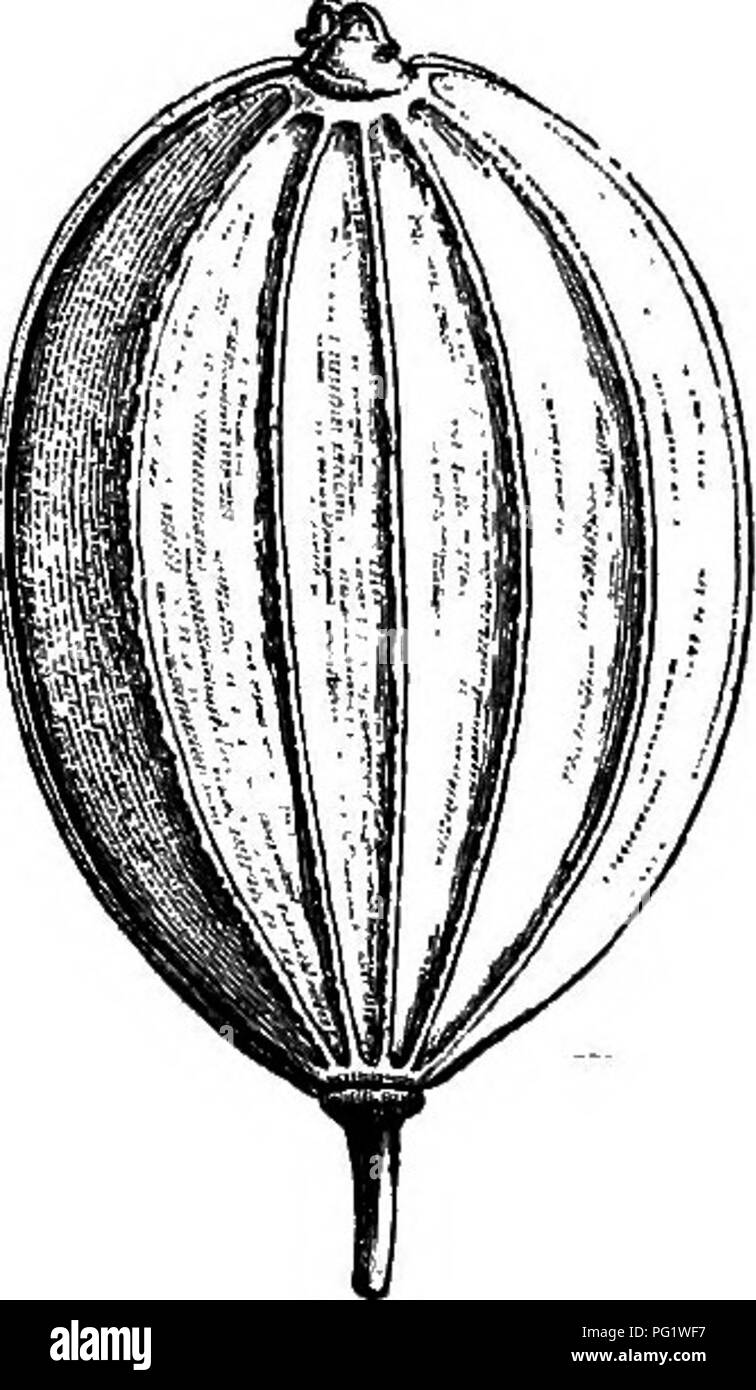. The natural history of plants. Botany. Pmoedanum {Scnrodosu) Asa-fiBiida. Fig. 86. Trans, sect, of fruit {'f). flowers, sessile or with short pedicels, and disposed in no fixed order around the point whence spring at the base the secondary axes of the inflorescence. But this peculiarity is far from constant. The same is true of the woody consistence and great development of the stems, of the form and size of the leaf- divisions.'^ Ferulago ^ is Ferula whose vittse, variable in number, often easily separate from the carpels, with the exterior coat of the fruit belonging to the receptacle.' Th

Image details
Contributor:
Central Historic Books / Alamy Stock PhotoImage ID:
PG1WF7File size:
7.1 MB (309.2 KB Compressed download)Releases:
Model - no | Property - noDo I need a release?Dimensions:
1206 x 2072 px | 20.4 x 35.1 cm | 8 x 13.8 inches | 150dpiMore information:
This image is a public domain image, which means either that copyright has expired in the image or the copyright holder has waived their copyright. Alamy charges you a fee for access to the high resolution copy of the image.
This image could have imperfections as it’s either historical or reportage.
. The natural history of plants. Botany. Pmoedanum {Scnrodosu) Asa-fiBiida. Fig. 86. Trans, sect, of fruit {'f). flowers, sessile or with short pedicels, and disposed in no fixed order around the point whence spring at the base the secondary axes of the inflorescence. But this peculiarity is far from constant. The same is true of the woody consistence and great development of the stems, of the form and size of the leaf- divisions.'^ Ferulago ^ is Ferula whose vittse, variable in number, often easily separate from the carpels, with the exterior coat of the fruit belonging to the receptacle.' They are mostly irregular, more numerous than those of the true Ferula and separated from each other by slightly elevated ridges. The umbels are also generally furnished with a polyphyllous involucre. The small importance we attach to the character of the inflorescence obliges us to consider as only a section of the same genus, Dorema (fig.. Fig. 87. Fiuit (f). ' These divisions are large and more or less deourrent under the ramifications of the ner- vures in the leaves of J. Narthex, an Indian species of which has been made the genus Nar- tiiex (Faicon. Trans. Linn. Soc. xx. 285;— Balf. Trans. Roy. Soc. JSdinb. xxii. t. 21, 22). 2 Koch, Nov. .Act. Nat. Cm: xii. 97.—Boiss. J'l. Or. ii. 996.—? MammatocauKs Tavroh. Flora (1834), 347. BoiBSiEU has enumerated (Fl. Or. ii. 1001, 1003) as helpnging to Firulago (from which, in fact, they appear inseparable), Feucer dai.um twdosmti L. {F. nodosa Boiss.) and F. lophoptcra Boiss. type of the genus Ulopiera Fenzl (Floi-a [1843], 461; Fndl. Gen. Suppl. iii. 83), in which the margin of the carpels is undu- lately curled; which, hy concatenation, has led to be included in Ferulago, Zqphosciaditmt DC. (M^OT. Ombell. 57, t. 2; Frodr. iv. 207) con- sidered by others (B. H. Gm. 905, n. 91) as a distinct genus allied to Prangos and Crithmam. ' Bentham and Hooker (fore. 918) think that Xanthogalv/m Lallem. [Fisch. et Mey. Ind, Sem. Sort, Petro